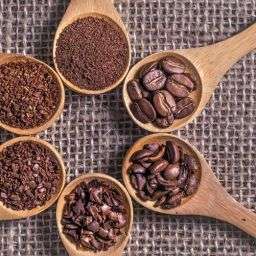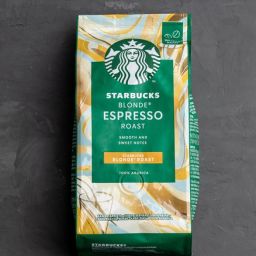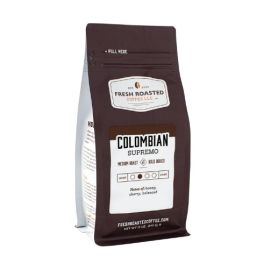
American Roast Coffee is a beloved choice among coffee lovers, recognized for its perfect balance of richness and smoothness. This type of coffee falls into the medium roast category, which is particularly notable for enhancing the bean’s true flavor while adding a touch of roastiness that’s neither overpowering nor too subtle.
During the roasting process, American Roast Coffee is cooked to a point that is typically described as a medium brown color. This level of roasting helps to preserve many of the beans’ intrinsic qualities like their origin flavors and distinct aromas, which can range from fruity to nutty depending on the bean used.
Key Takeaways About American Roast Coffee
- Balanced Flavor: One of the most appealing aspects of American Roast Coffee is its balanced flavor profile. It strikes a harmonious middle ground, offering enough depth for those who enjoy a hearty cup but with mild enough tones to appeal to those who prefer a smoother taste.
- Versatility in Brewing: Whether you’re brewing a classic drip coffee, pulling a shot of espresso, or preparing a French press, American Roast Coffee is an excellent choice. Its adaptable flavor profile makes it ideal for various brewing methods, ensuring a satisfying cup no matter how you choose to brew it.
- Retention of Coffee’s Original Characteristics: Thanks to the medium roasting process, American Roast Coffee retains many of the beans’ original characteristics. This means you’ll enjoy not only the flavors developed during roasting but also the unique notes that are inherent to the beans themselves, allowing for a more complex and enjoyable coffee experience.
The Production Process of American Roast Coffee
The journey of American Roast Coffee begins long before it reaches the roaster, starting with the meticulous selection of beans primarily sourced from Central and South America. These regions are renowned for their ideal coffee-growing climates that contribute to the distinct flavors and aromas we cherish in our coffee.
Sourcing the Beans
Coffee beans destined to become American Roast are often harvested from the lush, mountainous terrains of countries like Brazil, Colombia, and Guatemala. These areas provide the perfect balance of rainfall and altitude, crucial for nurturing coffee cherries that yield beans rich in flavor and aroma. The beans are typically Arabica, known for their smooth, complex flavor profiles, as opposed to the more robust and intense Robusta beans.
Roasting the Beans
Once the beans have been selected and transported to the roaster, they undergo the transformation that defines American Roast Coffee. The roasting process for American Roast is carefully controlled to reach a medium roast level.
This involves roasting the beans until they are a rich, medium brown color, just past the first crack stage but well before the second crack. This stage is critical as it develops the bean’s flavor without overshadowing its original characteristics.
Flavor Development During Roasting
During roasting, the beans experience a series of chemical reactions, which are essential in developing the coffee’s final taste. The Maillard reaction, a chemical reaction between amino acids and reducing sugars, plays a key role here. It not only darkens the beans but also helps in developing complex flavor compounds that contribute to the coffee’s full-bodied, slightly sweet flavor that is not too overwhelming but pleasantly robust.
The careful balance of roasting time and temperature ensures that each batch of American Roast Coffee offers a consistent flavor profile that highlights both the natural qualities of the beans and the rich, caramelized flavors developed during roasting.
Factors Influencing the Flavor of American Roast Coffee
The flavor of American Roast Coffee is the result of a complex interplay of factors, from the type of bean used to the specific conditions under which it’s grown and processed. Understanding these elements can help coffee lovers appreciate what goes into their favorite cup.
Bean Type and Growing Conditions
The type of coffee bean is a fundamental factor affecting the flavor of American Roast Coffee. Typically, Arabica beans are used for this roast due to their smoother, more aromatic profile compared to the stronger, more bitter Robusta beans. Arabica beans are generally grown in high-altitude regions of Central and South America, where the climate and soil conditions are ideal for producing beans with a complex array of flavors and aromas.
The growing conditions—such as altitude, climate, and soil type—significantly influence these characteristics. Beans grown at higher altitudes tend to have higher acidity, which can result in a brighter cup with more pronounced floral and fruity notes. The consistent climate of these regions ensures that the beans develop slowly, allowing more complex flavors to emerge.
Processing Methods
After harvesting, the processing method chosen to prepare the coffee beans also impacts flavor. There are primarily two methods: wet (washed) and dry (natural) processing. Wet processing typically results in a cleaner, brighter cup, emphasizing the bean’s intrinsic qualities.
In contrast, dry processing often imparts a sweeter, more fermented taste, with pronounced fruity and earthy notes. Each method highlights different aspects of the bean’s flavor potential, which can be tailored to enhance the characteristics desired in the final roast.
Roasting Time and Temperature
The roasting process, particularly the time and temperature, plays a critical role in developing the desired flavor profile of American Roast Coffee. Roasting the beans to a medium level involves carefully balancing time and heat to enhance the beans’ inherent qualities without overpowering them. This level of roast brings out a rich, caramel-like sweetness and a complex flavor profile that retains the original notes of the beans while adding a slight roastiness.
During roasting, the beans undergo the Maillard reaction—a chemical reaction that not only darkens the roast but also creates rich, flavorful compounds. This reaction, combined with the development of caramelization, adds depth and richness to the coffee. The precise control of roasting time and temperature is crucial in achieving the characteristic balanced and full-bodied flavor of American Roast Coffee.
How to Brew American Roast Coffee
American Roast Coffee, with its balanced flavor, is fantastic for a variety of brewing methods. Whether you’re a fan of the simplicity of drip coffee, the strength of espresso, or the richness of French press, this roast can handle them all with grace.
Drip Coffee: For those who prefer the classic drip coffee method, start with a clean machine and use about 1 to 2 tablespoons of ground coffee per 6 ounces of water. Opt for a medium grind to ensure optimal extraction without over-extracting, which can lead to bitterness.
Espresso: Espresso lovers can rejoice as American Roast works wonderfully for a robust shot. Use a fine grind and aim for a brew time of about 20-30 seconds to capture the essence of the roast without drawing out unwanted flavors.
French Press: If you’re leaning towards using a French press, go for a coarser grind. Allow the coffee to steep for about four minutes before plunging to enjoy a full-bodied cup that highlights the roast’s complexity and depth.
FAQs
What distinguishes American Roast from other roast levels?
American Roast Coffee is a medium roast, known for achieving a perfect balance in flavor—neither too light nor too dark. This roast level highlights the bean’s natural flavors while introducing a slight sweetness and body from the roasting process.
Can American Roast Coffee be used for espresso?
Absolutely! American Roast is versatile and when used for espresso, it delivers a smooth, balanced shot that can be less bitter than darker roasts, making it a favorite for those who prefer a milder espresso.
How does American Roast compare in caffeine content to other roasts?
The caffeine content in American Roast Coffee is generally similar to other roasts when measured by weight. Light roasts have slightly more caffeine by volume, as they are denser, but the differences are minor enough that the roast level should not significantly impact the caffeine content.
Final Thoughts
American Roast Coffee stands out for its balanced and versatile nature, making it a popular choice for a wide array of coffee drinkers. Whether you enjoy it black or with cream, brewed via drip, espresso, or French press, its well-rounded flavor profile ensures a delightful coffee experience every time.









